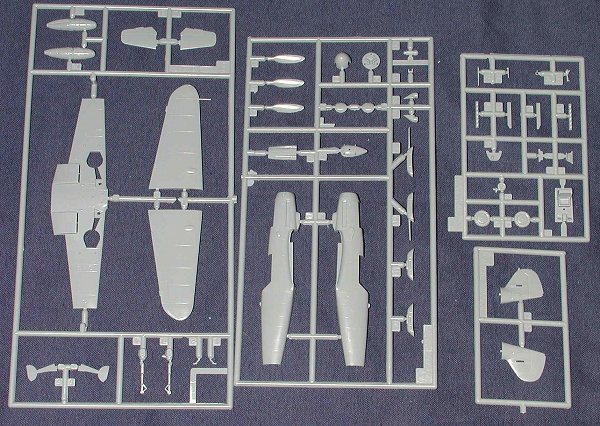
|
KIT: |
Hasegawa 1/72 Bf-109G-6/14 |
|
KIT # |
52073 (AP73) |
|
PRICE: |
$ |
|
DECALS: |
Two Aircraft |
|
REVIEW & |
|
|
NOTES: |
'Hartmann' twin pack |

|
HISTORY |
The top 'top gun' in the history of air warfare is Germany's Erich Hartmann. In less than 4 years, he managed to amass a total number of 352 confirmed victories, mostly over Russian pilots. This was done flying the Bf-109 almost exclusively from 1941 until the end of the war in 1945. What is even more amazing about his feats is that he really didn't start getting a lot of kills until 1943 when it seems as if he could do no wrong. This isn't completely true as he was shot down himself a number of times during the conflict. Captured by the Russians at the end of the war, he was sent to one of the many Gulags that claimed the lives of a number of German prisoners. Released in the early 1950s, he went on to become a General in the new Luftwaffe and only recently passed away.
The Bf-109 that he had the most success with was the G-6 variant. Many of his planes were decorated with the 'tulip nose' as were the F-86s of his modern Luftwaffe unit when he was commander. He also flew the G-14 and the K-4 as well as earlier variants of the 109, though it is not known if he ever flew the G-10, a common late war version.
|
THE KIT |

Back about 1988 or so, Hasegawa started on a campaign to build new 1/72 aircraft kits. Included in this program were several aircraft types that had been in the Hasegawa catalogue for many years. This included the A6M, Fw-190 and the Bf-109. The G model was the first to come out and was met with rave reviews from 1/72 builders. The kit was accurate and offered detail that was a step above the earlier kit (which, it must be said, wasn't bad, but had some shape problems in the rear fuselage; too skinny). This kit is typical of the new breed of model in that it has lots of small parts and the ability to do different variants using the same basic mold.
The main difference between the G-6 and G-14 kit is the tail assembly. The G-14 has the taller wooden tail and the G-6 the original shorter version. The G-14 version is not the higher powered AS variant as that would have meant, at a minimum, a refined forward cowling assembly and perhaps other mods. Unfortunately, there is no really good G-14/AS kit though you could modify the Revell of Germany G-10 if you so wished one. Anyway, you also get two different canopies, the older version and the newer 'Erla Haube' canopy. Unfortunately, these are a single piece so you cannot display any interior work that you might do. Also included in the kit are underwing 20mm cannon and a drop tank.
 Instructions are just as superb
as on other Hasegawa kits, offering Gunze Sangyo color callouts. Decals are for
two of Hartmann's planes. The G-6 is in normal RLM 74/75/76 while the G-14 is in
a winter scheme of white upper surfaces. You get a full stencil suite as well as
swastikas for the fin. I have found Hasegawa decals to be occasionally
troublesome to use, though recently they have worked well for me. They are
generally a bit thick, and the whites are slightly transparent. However, they do
stick well and will put up with a lot of handling abuse.
Instructions are just as superb
as on other Hasegawa kits, offering Gunze Sangyo color callouts. Decals are for
two of Hartmann's planes. The G-6 is in normal RLM 74/75/76 while the G-14 is in
a winter scheme of white upper surfaces. You get a full stencil suite as well as
swastikas for the fin. I have found Hasegawa decals to be occasionally
troublesome to use, though recently they have worked well for me. They are
generally a bit thick, and the whites are slightly transparent. However, they do
stick well and will put up with a lot of handling abuse.
I'll confess to you that I had not seen this boxing before until I picked it up at a swap meet. The date is 1998 so it isn't that old a kit. It seems like everything with Hartmann's name on it sells well in the modeling world and perhaps this one came and went so fast that I missed it. Anyway, the newer mold Hasegawa 109s build into very nice models and I can recommend this one to those who have an interest in the genre.
Review kit courtesy of me and my wallet!
If you would like your product reviewed fairly and quickly by a site that averages thousands of visits a day, please contact me or see other details in the Note to Contributors.